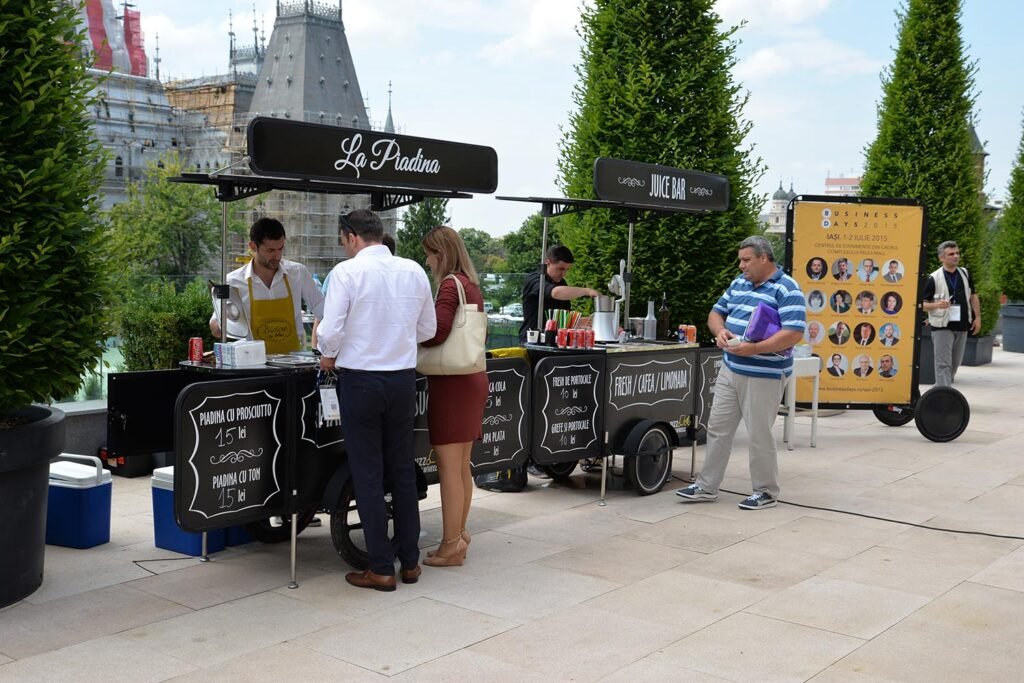How to Start a Small Food Cart in Europe as a Foreigner (2025 Guide)

How to Start a Small Food Cart in Europe as a Foreigner (2025 Guide)
pening a small food cart is one of the easiest ways for a foreigner to start a European food business in 2025. It requires less investment, basic setup, and a chance to test your idea without the risk of a full cafe.
Here’s exactly how to launch successfully.
🌍 1. Pick a Friendly Country & Location
- UK: Register 28 days before starting. You will need a street trading licence, food registration, gas/electrical safety certification, and public liability insurance
- Netherlands: Need a market trader licence, food hygiene approval (HACCP), local health permits, and approval for music/alcohol if applicable
- Belgium: Must register with BCE, get a VAT number, itinerant merchant card, food safety license from AFSCA, municipal food permit, and environmental approval
- Germany: Register at local Gewerbeamt, get a trade license, tax number, food hygiene certificate from Gesundheitsamt, and mobile vending permit .
🛠 2. Register the Business
- Choose legal entity: sole trader or small company (e.g., GmbH/UG in Germany) .
- Register with local authorities for food business, VAT, and municipal trade permits.
🍽 3. Get Required Licences & Training
- Food registration: Usually free, needs 28 days notice before opening
- Hygiene training: Level 2 or 3 food safety (UK), HACCP certification (Netherlands, Germany, Belgium)
- Gas and electrical safety: Annual certification required
- Additional permits: music, alcohol, public liability insurance
💸 4. Budget Your Startup
- Initial costs:
- Small cart/stall setup: £2K–£10K in UK; €10K–€50K in other countries .
- Cart equipment: gas/electric stove, fridge, POS/gaslicences, water and hand-washing station
- Market/parking fees: £30–£300+ per day depending on location .
📍 5. Secure Location & Equipment
- Choose busy spots like markets, events, or train stations — check local rules for designated pitches .
- In Netherlands/Spain, landowner and city permission is essential .
- Buy new or used cart, equip it for cooking and hygiene — consider water tank and sink setup from Poland advice .
📦 6. Comply with Food & Hygiene Standards
- Wear out full hygiene training
- Display allergen info clearly
- Clean equipment, store food at correct temps.
- Undergo health inspections regularly .
🤝 7. Visa & Foreign Permit
- Apply for a self-employment (entrepreneur) visa or passport permit (if non-EU)
- EU nationals don’t need visa — others need proof of startup ability and capital.
📣 8. Marketing & Launch Strategy
- Start with small events or festivals — check tender requirements in Poland example
- Use eye-catching signage, sample days, and social media to promote .
- Offer loyalty discounts, engage local customers, build word-of-mouth buzz.
📝 9. CHO Checklist
- Country + location permit
- Legal registration + VAT
- Hygiene license + food inspection
- Gas/electric certification
- Market spot & stall equip
- Insurance + liability
- Visa if needed
- Soft launch & marketing
✅ Final Thoughts
You can start a small food cart in Europe as a foreigner. It may take 2–6 months depending on country, but with proper prep, budget, and local support — success is within reach.
A guide about start a food carts in Europe
#millionairefoodcart
#foodcart
#millionairequantum